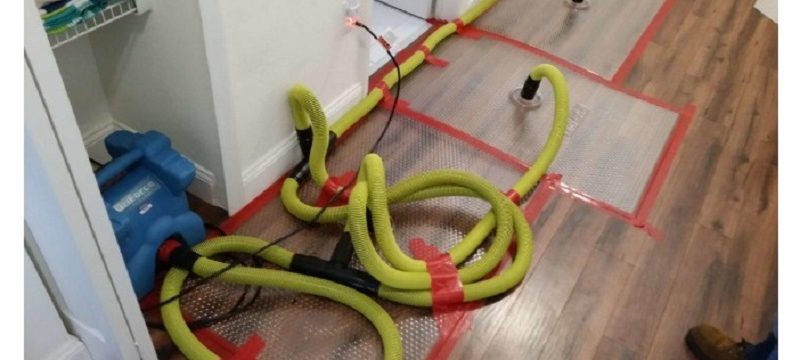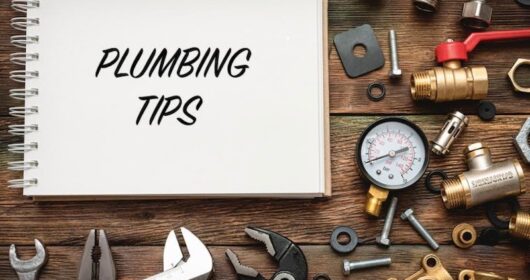10 Steps to Take After Water Damage Occurs in Your Home

Water damage is a serious issue that can lead to costly repairs and health hazards if not addressed properly. Whether it’s from a burst pipe, a leaking roof, or a flood, it’s essential to take action immediately to prevent further damage and protect your home and family. Water damage in Moreno Valley is a common problem that many homeowners face. It can occur due to a variety of reasons such as burst pipes, leaking roofs, and flooding. Regardless of the cause, water damage can lead to costly repairs and pose health hazards if not addressed promptly. In this article, we’ll explore the causes and effects of water damage and provide tips on how to prevent and address it in your home.
Causes of Water Damage
Water damage can be caused by several factors, including:
Burst pipes or plumbing issues: This is a common cause of water damage and can occur due to aging pipes or extreme weather conditions.
Leaking roofs or gutters: Water can seep into your home through small leaks in your roof or gutters, leading to damage to your walls, ceilings, and floors.
Flooding: Natural disasters such as hurricanes and heavy rainfall can lead to flooding and cause significant water damage to your home.
Effects of Water Damage
The effects of water damage can vary depending on the severity of the damage. Some common effects include:
Structural damage: Water can weaken the structure of your home, leading to cracks, sagging ceilings, and warped floors.
Mold growth: Moisture can lead to mold growth, which can cause health problems such as respiratory issues, allergies, and infections.
Electrical hazards: Water and electricity do not mix, and water damage can lead to electrical hazards, including electrocution.
Damage to personal belongings: Water can damage your personal belongings, including furniture, electronics, and clothing.
Tips to Prevent Water Damage
Preventing water damage is much easier and less costly than repairing it. Here are some tips to prevent water damage in your home:
Regular maintenance: Regularly inspect your pipes, roof, and gutters for any signs of wear and tear and fix any issues immediately.
Install a sump pump: If you live in an area prone to flooding, consider installing a sump pump to prevent water from entering your home.
Proper insulation: Properly insulate your home to prevent pipes from freezing and bursting in extreme weather conditions.
Install water detection devices: Water detection devices can alert you to potential leaks before they cause significant damage.
Clean gutters and downspouts: Clean your gutters and downspouts regularly to prevent water from seeping into your home through leaks.
Don’t Miss –
How To Troubleshoot Common Electric Water Heater Problems
Here are ten crucial steps to take after water damage occurs in your home:
1. Shut off the water source
When water damage occurs in your home, shutting off the water source is one of the first and most important steps to take. This will help prevent further damage and minimize the extent of the existing damage. Shutting off the water source will stop the flow of water into your home and prevent any additional water from entering the affected area.
Before you shut off the water source, it’s important to identify the source of the water damage. The source could be a burst pipe, leaking roof, or overflowing toilet, among other things. Once you’ve identified the source, locate the shut-off valve that controls the water supply to that area. The shut-off valve can usually be found near the source of the water, such as in the basement or under a sink.
If you’re unable to locate the shut-off valve or are unsure about how to turn it off, it’s best to contact a professional plumber to assist you. In some cases, shutting off the main water supply to your home may be necessary to stop the flow of water completely.
2. Turn off electricity
Water and electricity do not mix, and it’s crucial to turn off the power to the affected area to avoid electrocution. If you’re unsure how to do this, contact a licensed electrician for assistance.
3. Call for professional help
Water damage can quickly escalate into a severe problem, so it’s crucial to contact a professional restoration company as soon as possible. They have the expertise and equipment to assess the extent of the damage and develop an effective restoration plan.
4. Assess the damage
Before the professionals arrive, take pictures and document the damage for insurance purposes. Be sure to wear protective gear such as rubber gloves and boots as standing water can be contaminated.
5. Remove standing water
If the water level is shallow, you can use a wet/dry vacuum to remove the standing water. However, for deeper water, it’s best to leave the job to the professionals who have specialized equipment.
6. Dry out the affected area
To prevent further damage, it’s essential to dry out the area as soon as possible. Open windows and doors to improve air circulation and use fans and dehumidifiers to reduce moisture levels.
7. Salvage what you can
Salvage any belongings that haven’t been damaged and move them to a dry area. For items that have been damaged, separate them into categories such as salvageable, unsalvageable, and questionable for insurance purposes.
8. Remove damaged materials
Remove any damaged materials such as drywall, insulation, and carpeting. These materials can harbor mold and bacteria, leading to health hazards.
9. Disinfect and sanitize
Thoroughly clean and disinfect the affected area to prevent mold growth and remove any potential health hazards. This step is crucial to ensure the safety of your home and family.
10. Restore and repair
Finally, restore and repair the damage caused by the water. This may include replacing drywall, flooring, and insulation, as well as repairing any structural damage. Be sure to work with a licensed contractor and keep records of all repairs for insurance purposes.
Water damage can be a stressful and overwhelming experience, but taking these ten steps can help minimize the damage and ensure the safety of your home and family. Remember to act quickly, document the damage for insurance purposes, and seek professional help when necessary. With the right steps, you can restore your home to its pre-damage condition and move forward with peace of mind.
Subscribe & Get E-Mail Updates Delivered
Our informative Design related articles featuring the latest Resources for Web Designers & the Web get delivered via email dialy. Thousands of readers have signed up already. Why don't you subscribe as well, and get articles delivered to your inbox?






Leave a Reply